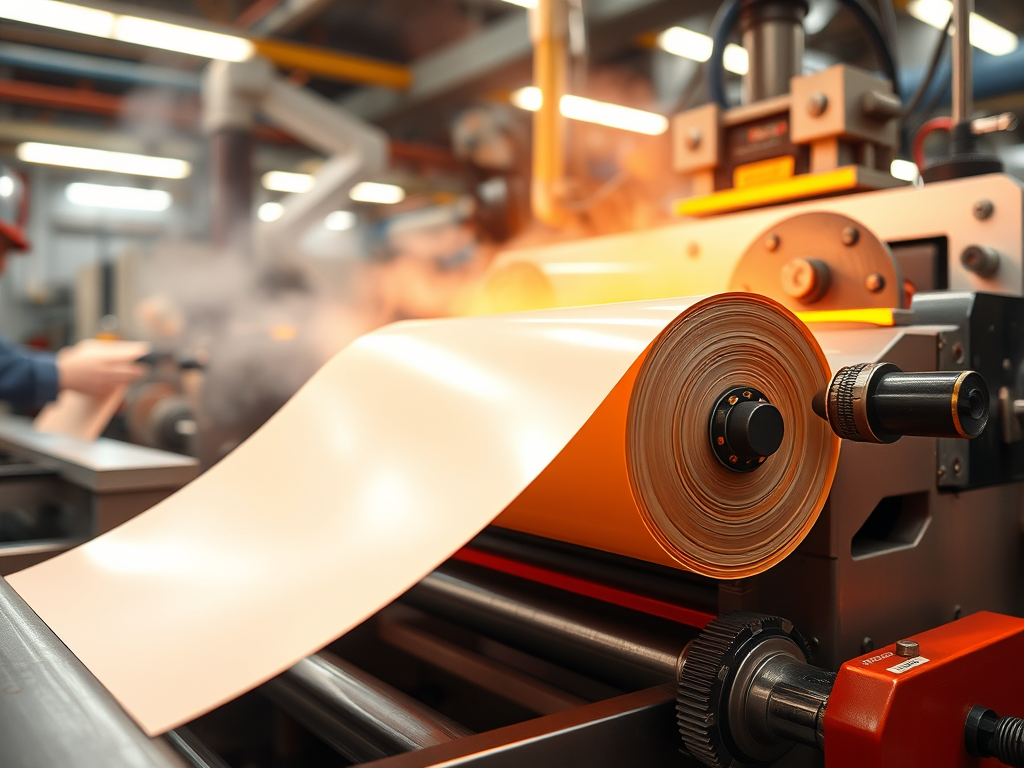When heat, pressure, friction, and chemicals all collide in a single environment, most materials fail fast. Teflon sheets, however, are the exception. Their ability to stay stable when everything else starts to break down is why they’ve become a go-to in high-stress manufacturing.
But what exactly makes Teflon so dependable when conditions are extreme? And how are these sheets being used in tough industrial settings?
What Makes Teflon Sheets So Tough?
Teflon is the trade name for polytetrafluoroethylene (PTFE), a synthetic fluoropolymer with some rare properties. It’s non-reactive, slippery, and handles a wide range of temperatures.
These characteristics give it several advantages in demanding industrial environments:
- Thermal resistance – Can handle temperatures up to 260°C, making it ideal for operations involving heat.
- Chemical inertness – Doesn’t react with most corrosive substances, including acids, solvents, and bases.
- Low friction surface – Extremely smooth, reducing wear and energy loss in moving parts.
- Non-stick behaviour – Prevents materials from building up, sticking, or gumming up the process.
- Electrical insulation – Offers excellent dielectric properties, useful in electronics and electrical systems.
These features aren’t just bonuses. In many manufacturing contexts, they’re essential.
Where Teflon Sheets Come Into Play
You’ll find Teflon sheets Melbourne in environments where other materials simply can’t cope. High heat, aggressive chemicals, and abrasive materials are common hurdles in the manufacturing world. Teflon steps in where those conditions are a daily reality.
1. Heat Sealing and Laminating Equipment
Teflon sheets are widely used as barrier layers in heat sealers and laminators. The non-stick surface ensures that plastics, films, and other materials don’t melt onto the heated elements.
Without a protective sheet, machinery would gum up with residue, forcing constant cleaning and increasing wear. Teflon stops that build-up, reducing downtime and extending the life of the equipment.
2. Composite Moulding
In aerospace and automotive industries, composite materials are often formed under pressure and heat. Teflon sheets are used as release films in these moulds. They allow complex parts to be removed without sticking or causing damage.
Because the sheets don’t warp under heat or cling to the cured product, they’re perfect for maintaining surface integrity in precision components.
3. Conveyor Belts in Harsh Environments
Some Teflon sheets are made into belts for high-temperature conveyors. These are often found in:
- Textile drying systems
- Food processing plants
- Chemical manufacturing lines
- Electronics assembly environments
The belts need to stay stable, not degrade, and offer smooth transport over heated or chemically active surfaces. Teflon’s resistance to sticking and wear allows products to move cleanly without residue transfer or belt deterioration.
4. Gasket and Sealing Applications
Teflon sheets are frequently cut and shaped into gaskets and seals, especially in pipelines and pressurised systems. Their non-reactivity and compressibility make them ideal for maintaining a tight seal in systems that transport steam, acids, or solvents.
Where rubber or metal might degrade, Teflon holds steady, even with constant thermal cycling or vibration.
5. Electrical and Circuitry Insulation
In electronics manufacturing, Teflon sheets serve as insulation barriers between conductive components. Their dielectric strength makes them a preferred option when managing heat and preventing electrical leakage in compact systems.
They’re also useful in cable wrapping, especially in aerospace and defence applications where both heat and electrical stability are critical.
6. Chemical Processing Plants
Reactors, mixing vats, and other components in chemical manufacturing often rely on Teflon sheets as linings or barrier layers. They protect metal structures from corrosion and help maintain the purity of the materials being processed.
Teflon linings prevent contamination and ensure consistent output quality, especially in pharmaceutical and specialty chemical production.
Why Teflon Beats Other Materials
In high-stress settings, many materials wear out fast. Metals corrode. Plastics deform. Rubber fails under heat or pressure.
Teflon offers an unusual mix of strength and flexibility:
- It’s rigid enough to hold shape but soft enough to form seals.
- It resists the strongest industrial solvents yet doesn’t crack or chip like brittle polymers.
- It doesn’t support combustion, making it suitable for fire-sensitive operations.
- And unlike most materials, it retains performance over years of use without serious degradation.
In other words, it’s not just useful, it’s predictable. That kind of consistency is exactly what’s needed when process interruptions mean lost production time and costly repairs.
Care and Handling Considerations
While Teflon is incredibly durable, it’s not indestructible. It has a few quirks that must be managed for long-term use.
- Avoid sharp tools – Teflon can be nicked or gouged during installation. Once damaged, sheets may start to peel or wear unevenly.
- Watch thermal cycling – While Teflon handles heat well, repeated extreme fluctuations in temperature can affect flexibility over time.
- Use proper backing – In high-pressure uses, Teflon performs best when supported by a firm surface behind it to reduce deformation.
- Clean gently – Teflon doesn’t attract much dirt or residue, but if it needs cleaning, avoid harsh abrasives that could scratch the surface.
Handled properly, Teflon sheets can deliver a long service life even under punishing conditions.
Final Thoughts: Strength Where It Counts
Not every material is cut out for the realities of high-stress manufacturing. Some degrade. Some distort. Some simply don’t last.
Teflon stands out by doing exactly what’s needed: resisting wear, staying stable, and staying out of the way. Whether it’s making sure a seal holds, keeping parts moving cleanly on a hot line, or protecting a sensitive surface from corrosion, these sheets are part of the quiet backbone of modern industry.
They might not look impressive at first glance. But in the right environment, they make all the difference.

